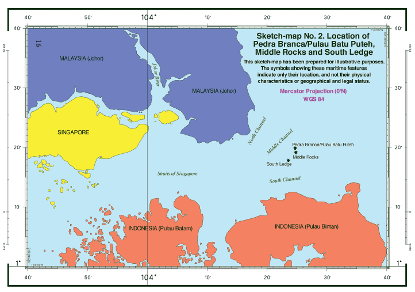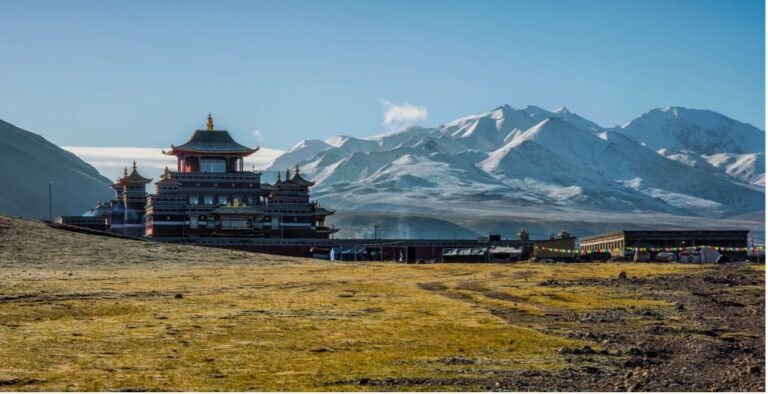By Yvette Foo
Singapore’s Changi Chapel & Museum (CCM) is a memorial site that exhibits artefacts from and stories about the lives of prisoners of war (POWs) and civilians held in Changi Prison Camp during World War II (WWII). Memorials like the CCM are key transitional justice measures that affirm the right to know/truth: they represent (a State’s) efforts to acknowledge past violations of human rights and international humanitarian law.
Over the years, the CCM has rebranded itself from only being a site of remembrance for veterans, to broadening its relevance to all visitors. The CCM seeks to preserve an important part of Singapore’s history under Japanese occupation, which forms part of Singapore’s mission to ensure the horrors and lessons from WWII are not forgotten.
This blog post critically analyses how the CCM approaches the right to truth as a fundamental pillar of transitional justice. It acknowledges that by using ‘localised’, collective memories to spur conversations about the importance of peace as the corollary of war, the CCM endures as an ever relevant, thought-provoking memorial. Yet, concomitantly, such pragmatic concerns of long-lasting relevance that push the museum’s focus towards the collective dimension of truth, especially that of educating future generations, must compromise on the individual dimension of the right to truth.
1. Background of the CCM
From 1942 to 1945, the Japanese Central Military Administration appropriated Changi prison to hold allied British, Australian, New Zealander, Indian POWs as well as local civilians. Internees were subjected to forced labour and left to survive on their own despite the prison’s poor infrastructure, dreadful living conditions, and lack of essential supplies.
Earlier versions of the CCM between the 1950s to 1980s consisted of a single chapel, modelled after the original St George’s Church built by the Changi prisoners during their internment. The 1988 Changi Chapel was often visited by veterans and relatives of POWs, and started a tradition of leaving plaques and war memorabilia at the chapel out of respect. In 2001, the chapel was dismantled and reconstructed alongside a museum to feature the donated war memorabilia. In 2018, Singapore’s National Heritage Board took over and closed the museum for redevelopment. The CCM reopened in 2021 with new artefacts, many of them donated by family members of POWs.
Visitors to the museum can study carefully preserved artefacts from the prison, including original photographs, items used to hide contraband, make-shift toothbrushes. There is even a recreated, true-to-size Changi ‘Gaol’ cell to help visitors visualise what daily life looked like for the POWs. Within its solemn halls, a distinct story of resilience despite wartime adversity is told.
2. How the CCM Addresses the Right to Truth
Under the Report of the Special Rapporteur from the 45th Session of the United Nations Human Rights Council (HRC Report), memorialisation is a possible “fifth” pillar of transitional justice. The Report explains the goals of memorialisation, including acknowledging past human rights violations, restoring victim dignity, rebuilding trust and promoting reconciliation between citizens and the State or between different groups. The way that memorials engage in memory work is necessarily linked to the right to truth under transitional justice, which the 2005 Orentlicher Principles further subcategorises into having individual and collective dimensions (see paragraph 17).
The ‘individual’ dimension concerns the importance of acknowledging human rights violations to victims directly in a public, transparent, and respectful way. For the CCM, earlier versions of the chapel achieved this goal as many ex-POWs, especially foreign veterans, felt recognised or honored when invited to endorse the museum or donate their mementos. The choice to maintain the original design of the chapel is a symbolic one, and even now, the revamped CCM displays bona fide artefacts belonging to the internees, which ensures their voice in Singapore’s history is safeguarded in a validating space. In this way, the museum is victim-centric and looks to the past by publicly acknowledging (and not downplaying) the hardships that the internees suffered.
On the other hand, the ‘collective’ dimension places society as the main right-holder and affirms their right to know the causes and consequences of past atrocities. The CCM is a site of education, and it impresses upon all generations to remember the terrors of wars and not take peace for granted. Its exhibits candidly discuss the fall of Singapore, the deadly Thai-Burma railway, and daily life of internees, with the hope that wider knowledge helps to prevent recurrence of violations. Thus, the CCM bridges generational gaps by generating honest, hopeful conversations on the dualities of peace and conflict, of resilience and hardship.
3. Building Long-Term Relevance: Pragmatic Use of ‘Localised’ Postmemories
Most of the CCM’s visitor pool consisting of students: younger generations who have no direct experience with WWII, or have family members who cannot or do not want to recall/share traumatic memories. The question is whether the museum’s themes will continue to resonate with future generations. Empirical studies suggests that the importance of memorials is “not always obvious” for younger generations, who find it difficult to relate emotionally or socially to war memorials. These are challenges that the CCM is conscious of and actively resists in two ways.
Firstly, the CCM employs postmemories, defined as the transgenerational transfer of traumatic knowledge from past events whose effects continue to be relevant in the present. The museum connects younger generations to the lives of the POWs and civilians interned at Changi prison during WWII by “localising” the latter’s experience, and presenting them as part of Singapore’s “shared history”. Emphasis is placed on how the consequences of a global war are relevant for all visitors, as exhibits and docents encourage visitors to reflect on the internees’ experiences beyond ‘foreign’ and ‘local’ divides. As Vinitzky-Seroussi argues, culture is an important tool to build collective memories. Postmemory work in the CCM likewise uses collective heritage to help visitors of any age, race, and gender understand the lives of internees (even if not emotionally or socially). With the transnational nature of a world war, most WWII memorials often discuss the experiences from other countries while blending them with national identity.
Understandably, the museum’s top-down assimilation can be demoralising for victims who no longer feel represented. Muzaini and Yeoh explain how the CCM’s collective narrative was criticised for ignoring local, ‘Asian’ stories. Most of the CCM’s artefacts are from Allied British and Australian internees, and although there are small (some may argue tokenistic) displays discussing more ‘local’ memories like the Sook Ching Massacre and resilience of Elizabeth Choy, coverage of the Malay Regiment and Indian Army is missing or paltry at best. For Singapore’s multiracial and multi-religious postcolonial context, compromising on certain stories may give rise to risk of manipulated history or marginalisation (see HRC report paragraphs 31-32, 41), and can delegitimise the CCM’s memorialisation efforts. Difficulties obtaining ‘local’ artefacts aside (perhaps a new crowdsourcing endeavour is needed), the museum could benefit with more inclusive oral histories and digitalised archives, or specific exhibitions on ‘local’ experiences to ensure viewpoint plurality. If the CCM wants to truly evoke an “international memoryscape”, future work by historians and the museum’s curators must correct the imbalance to more convincingly engage younger generations.
Secondly, the CCM advocates for peace. Just as transitional justice in post-conflict societies shifts towards peacebuilding processes (see here, and here) and its forward-looking functions, so too must memorialisation and truth-seeking processes. As explained by United Nations Special Rapporteur Fabián Salvioli, memory processes use the past to promote a culture a peace through ongoing debate and education. WWII memorials are situated in what Teitel calls the “global phase” of transitional justice: where even peaceful, stable, and democratic societies benefit from the field’s broader goals of peace and security.
Some academics have expressed scepticism towards whether transitional justice can look beyond addressing root causes of conflict towards peacebuilding notions (see here, and here). There is, however, significant promise for peacebuilding through post-war memorialisation through long-term psychological and emotional healing through truth-telling. Post-war memorials serve as official tributes to a traumatic past, narrating how society has, in most cases, successfully transitioned away from conflict, while also acting as bulwarks against its recurrence. For the CCM, showcasing ordinary, mundane items presents a more profound message on everyday resilience and peace—normalising these concepts for future generations to adopt.
Through employing postmemories and peacebuilding advocacy, the CCM embodies how memorials maintain long-term relevance through remembrance. It is heartening to see positive reviews for the museum online (see for example TripAdvisor, or the museum’s Instagram and Facebook), which is indicative that the museum is well received by both local and international visitors who find the experience educational and meaningful.
4. Conclusion: Forward-Looking Memorialiation, and Peace through Truth
Eighty years after the end of WWII, the CCM’s role has evolved to prioritise collective memories and peacebuilding over victim-centred truth. Other sites, such as the Hiroshima Peace Memorial, adopt similar approaches.
However, being able to focus on forward-looking ambitions is a privileged opportunity: the CCM reflects a degree of historical closure to be able to shift its commemorative focus towards the future. Other sites in Asia still focus on victim-centric truth-telling to bring light to unaddressed historical traumas. For example, China’s opening of the Nanjing Massacre Memorial Hall was a direct response to Japan’s downplayed narratives in its history textbooks. Similarly, Seoul’s Statue of Peace commemorates the Comfort Women of WWII, and continues to be source of heated diplomatic debate between Korea (among others) and Japan. For these memorials, a victim-centric approach becomes necessary to address the lack of acknowledgment for key WWII harms through historical denial or distortion.
The CCM is just one example of how transitional justice achieves its broader purpose of peacebuilding through fulfilment of the increasingly multifaceted right to truth. Within the museum is a replica of a mural (see here) by Stanley Warren, a POW interned in Changi prison. Its message—a call for peace—resonates strongly with the themes discussed in this post.
Yvette Foo (LLM, LLB) is a Research Associate at the Centre for International Law, at the National University of Singapore. This blog post is based on her experience visiting the Changi Chapel and Museum in October 2024.
A virtual tour of the museum is available on YouTube by Liz Coward.





